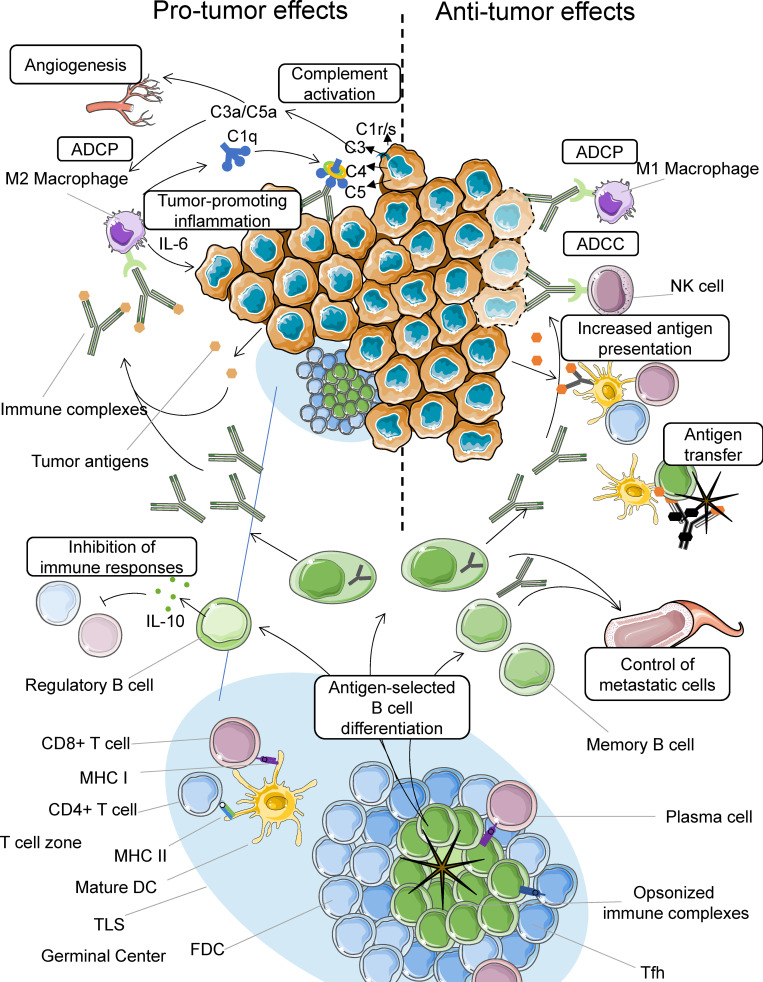Figure 2.
Mechanisms of action of B cells in cancer. In GCs of TLSs, B cells are selected by antigen presented by FDC-associated immune complexes. They are activated with the help of T follicular helper (Tfh) cells, proliferate, and differentiate into memory B cells and plasma cells. B cells present antigens to CD4 and CD8 T cells. Plasma cells produce IgG antibodies, which may increase antigen presentation to T cells after uptake of immune complexes by DCs and kill or engulf tumor cells via ADCC and ADCP, respectively (right). B cells can also transfer antigen directly to DCs or via complement receptor 2 to FDCs in the form of opsonized immune complexes. Memory B cells and antibodies circulate in the blood, where they help control potential metastatic cells (right). In contrast, binding of immune complexes to macrophages results in their activation and the production of proinflammatory mediators that exert protumor activities. Tumor cell–bound antibodies can also activate complement, which fuels inflammation and activates endothelial cells, promoting tumor growth and spread (left). B reg cells may also inhibit immune responses via the production of IL-10.

